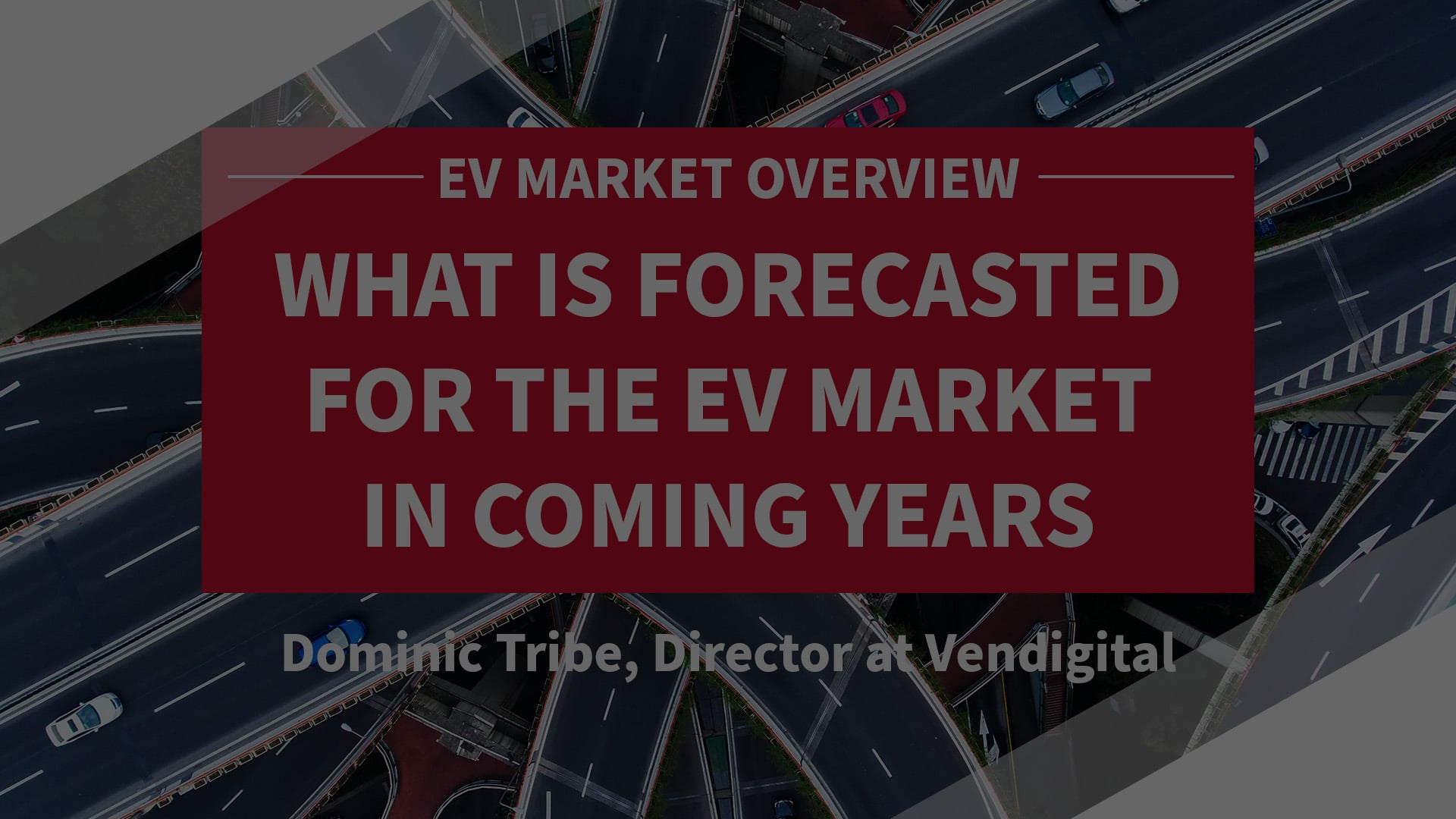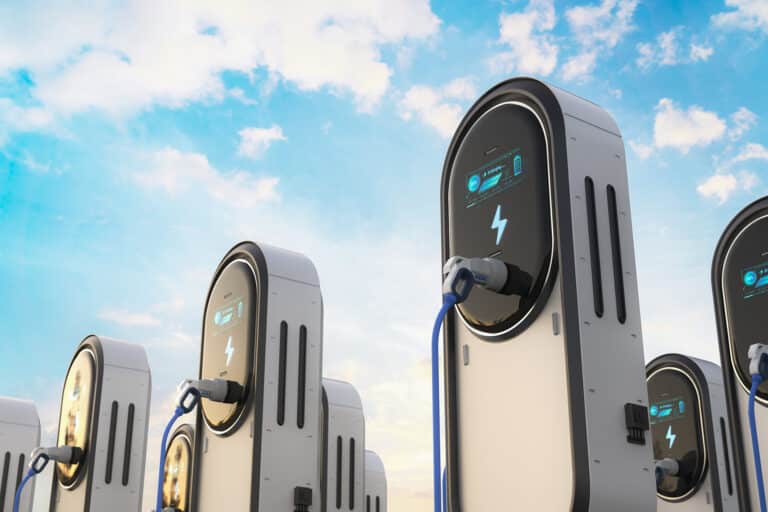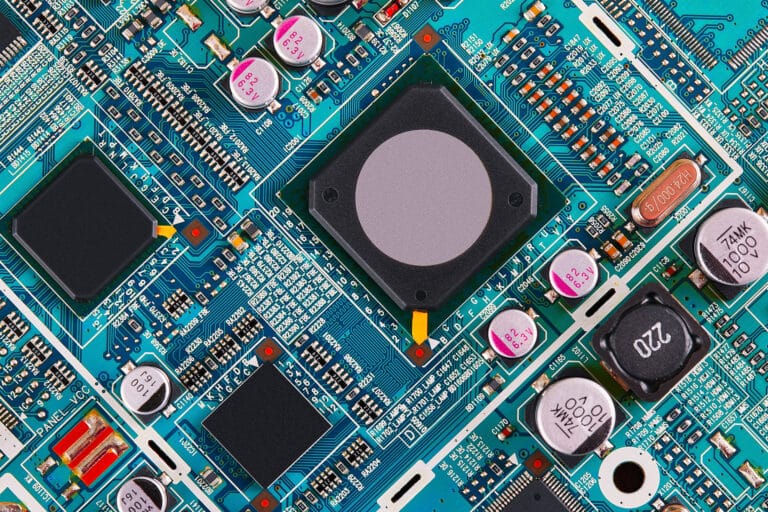
Increasing capacity and meeting decarbonisation goals – can it be done?
We discuss the cost and infrastructure considerations of switching to an all-electric fleet of off-highway vehicles.

In the second of a series of three videos providing an overview of the EV market, Vendigital Director and automotive specialist Dominic Tribe looks at what is forecasted for the EV market in coming years.

What is forecasted for the EV market in coming years – transcript
When we look forward to electric vehicle sales and look at what the market might look like in the subsequent years and potentially up to 2040, which is where a lot of the data kind of caps out at, we have two views of the market. One, an optimistic view, another one very much a pessimistic view. But what we probably would expect to see is sort of a natural settlement between the two, what’s somewhat referred to as a Goldilocks view.
What we’re starting to see though is the legislation really driving the adoption of electric vehicles. In the U.K. in 2030s when pure gasoline and diesel engine vehicles will be banned for production and only five years later in 2035, we’ll see even plug in hybrids banned as well so be into pure electric vehicles being manufactured and sold within the UK.
So, when we think about some of the optimistic viewpoints there’s things like the go global policy, so not just the UK but globally there are various legislations that are driving the transition to EVs and the ban on gasoline and diesel vehicles. There’s obviously the wider EU and US credits and subsidies which also help incentivize the adoption and the transition to electric vehicles, and it might be that we also start seeing incentives, particularly from OEMs in terms of financial incentives and ways to get consumers into vehicles. Particularly as, at the moment, they’re carrying a premium in terms of cost but also the adoption and some of the fears, talking about range anxiety or charging anxiety for example.
Also the increase in model line-ups, so giving consumers more choice. We spoke a bit in previous slides around how the there’s now even greater choice for consumers and what we’re really seeing is that consumers are driving themselves towards the forecourts and online to buy the vehicles, because nowadays the vehicles that suit their lifestyles and suit their driving needs as well. There’s also potentially quite a quick switch to EV architectures, in particular where infrastructure and charging is concerned.
Obviously, from a pessimistic point of view we still have lots of constraints in the market. There’s the latent effect from COVID in terms of switching production and capacity back on to kind of pre-pandemic levels, but also semi-conductor shortages and raw material shortages, which are constraining output and capacity right now. There might also be some slow or limited movement in the EV infrastructure, so if that’s not in line with consumer expectation and building consumer confidence, then we’ll see a slow-down effect of consumer uptake in electric vehicles as well.
Also, there’s potentially a consumer demand versus cost. At the moment electric vehicles are a price premium. It may be that we won’t see price parity until at least 2024 to 2028, depending on vehicle size as well. There may be other competing technologies that may distract or lure consumers away, so those things like around hydrogen or E-fuels as well.
But ultimately what we expect to see is where we were last year at 6.6 million units or so, we expect to see potentially in the region of 70 to 90 million electric vehicles sold over the next 15 years or so.
So when we talk about battery chemistry development and what that looks like, what we’ve seen in the past is a marked usage of LFP (lithium-Ion Phosphate) but as battery chemistries have developed and better energy density is available in other chemistries, we’ve seen greater adoption and usage of NCMs (Nickel Cobalt Manganese) batteries with varying ratios of cobalt / manganese to the nickel content and simply put, there’s more energy density for NCM batteries vs LFPs so they suit the sort of power application that vehicles and automotive drive trains require, as well as the ancillary devices that needed to be run from the vehicle as well.
In terms of the costs, what we are seeing is a reduction in overall cell cost, but that’s against a headwind of rising lithium and raw material costs. Interestingly, Tesla actually started reverting back to using LFP in some of its cheaper models like Model Three, for example, because the rising costs not only of lithium but in particular nickel and cobalt has meant that it becomes financially un-viable to produce some of the cars of the price points to make them attractive to consumers. What we’ve seen is a bit of re-traction, but hopefully as capacity improves and we see some softening in the raw material prices, what we would expect to see is a lot more adoption for NCM and emerging batteries based around the NCM chemistries.
In terms of price parity, we don’t really expect to see that until 2024 at the earliest for middle of the range type vehicles, these kind of vehicles with 50 kilowatt-hour (kWh) type battery packs. For larger vehicles about sort of similar timeframe and maybe a year later, again we’d expect to see NCM in there as well in terms of battery chemistries. But it’s probably not until about 2028 where we see smaller vehicles, those with around 25 kWh, maybe 30 kWh battery packs to really see price parity with the equivalent ice engine, gasoline or diesel for example. As of 2021 it was about $132 on average cost per kilowatt hour for batteries, and a lot of the data suggests that that’s going to decline over the coming years but hasn’t necessarily factored in the headwinds against some of the rising raw material costs, so we may see actually some further push out of price parity into the latter part of this decade.
When we think about the continuation of the forecast in particular in terms of the output capacity of the giga-factories, we’re seeing again a big exponential drive towards managing and pushing for more and more output, so at the end of 2021 we saw around 256 giga-factories announced, the lions share within China and obviously as we move then into mainland Europe and obviously you’ve hopefully seen the news some of the UK announcements as well, and it’s really whether or not that’s going to keep up with the demands and the uptake of electric vehicles from consumers.
We expect there always will be a need for LFP type battery chemistries, but a further drive towards the adoption of NCM and other NCM based chemistries as we move forward, and particularly on the anode side there’s differences between the silicon, whether it’s synthetic or natural, for example, and some of the graphite anodes as well.
And so, we’re seeing really a lot of emerging chemistries but don’t forget this takes a lot of time to go through the sort of due diligence and the development process as well. So, a lot of the sort of headlines that we might see about solid state batteries or that you might see around sodium batteries, for example, these are many, many years before that we’ll see them in real world applications.
As we move towards 2030 and the next decade in 2040, we will see bigger and bigger uptakes of batteries and the battery chemistries particularly with nickel cobalt involved as well, and what we are expecting to see, from the data at least, is by about 2040 somewhere over 6,000 maybe up to 6,500 gigawatt hours of output production from the giga-factories.
But as it remains to be seen, is whether or not the conversion of battery manufacturing against consumer demands will keep up and reconcile and mean that there’ll be batteries available when consumers and manufacturers need them.
Sign up to get the latest insights from Vendigital
Need an automotive sector specialist?
Related Insights

We discuss the cost and infrastructure considerations of switching to an all-electric fleet of off-highway vehicles.

EV makers in the UK and Europe are warning that Zero Emission Mandates are simply not doable and subdued levels of demand could force them to close factories. Should the industry embrace Chinese capability before it’s too late?

In our latest report we examine the impact of power electronics and the importance of inverters in EV manufacturing.
Subscribe to our newsletter